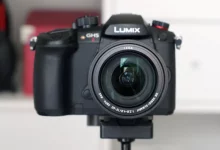Screen printing is a method used to transfer ink onto surfaces to create images or designs. However, achieving ink adhesion and durability requires a step called curing. Curing refers to the process of transforming ink into a resilient film. This transformation occurs through a reaction activated by UV light. UV-sensitive inks are specifically designed to react to UV radiation ensuring effective curing.
Selecting the Right Ink
Regular inks are not suitable for UV curing. It’s important to use inks that are specifically formulated for this purpose. UV-sensitive inks contain photoinitiators that respond to the wavelength of UV light, initiating the curing process. If standard inks are used with UV curing equipment, they may not cure properly, compromising print quality and durability.
Surface Preparation and Determination of Mesh count
Before printing, it is essential to prepare the surface of the substrate to achieve adhesion and minimize any defects. Ensuring the substrate is clean and free from dust or debris will result in clear prints.
The mesh count of the screen used significantly affects both ink deposition. Curing processes outcomes. Using a mesh count enables the application of ink layers resulting in quicker curing times. Nevertheless, assessing the desired printing result, ink thickness, and curing technique is crucial when choosing the mesh count.
Optimizing the Curing Process
For curing, it’s important to check the wavelength and intensity of the UV LED lamp or the distance between the substrate and the mercury lamp. The right wavelength is necessary for UV LED curing to activate photoinitiators. Regular equipment calibration helps maintain results. Avoids issues of under or over-curing.
Controlling Dwell Time;
Finding the balance of dwell time is crucial during the curing process. Dwell time refers to how the printed substrate is exposed to UV light. Insufficient curing can result in ink polymerization leading to adhesion. On the hand, overexposure can cause problems like ink adhesion issues or damage to substrates.
Ensuring Curing
To achieve consistent curing across the print, it’s recommended to use a curing unit with multiple UV lamps or LED arrays. This ensures a distribution of UV light eliminating variations in curing efficiency and ensuring print quality.
Considerations after Curing
After completing the curing process, allowing sufficient time for the substrate to cool down before handling or stacking is important. Premature handling may lead to smudging or damage to prints undoing all efforts put into the curing process.
Safety Precautions
Working with UV curing equipment requires gear such as safety glasses that block UV light and gloves. It is important to prioritize safety because exposure to UV light can affect the eyes and skin.
Testing and Fine-tuning
It might be necessary to perform test prints and adjust the curing parameters, especially when using types of ink or different materials. It’s important to keep records of settings to ensure consistent and reproducible results for future projects.
Following this guide can make you proficient in curing screen printing ink using UV LED or mercury lamps. Proper curing will result in prints with improved durability, vibrant colors and excellent resistance to wear, taking your screen printing projects to a level. Either way, if you are in the market for LED or mercury UV curing lamps, you should check out IUV products today!






